What is the Terracotta Army?
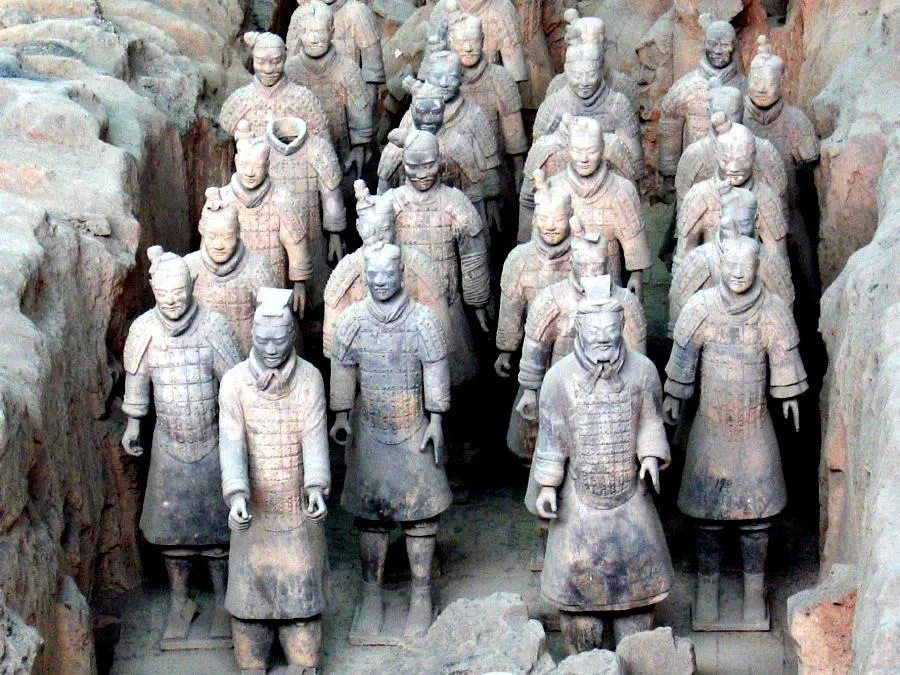
The Terracotta Army is a collection of life-sized terracotta statues of soldiers, horses, and chariots that were buried with China’s first emperor, Qin Shi Huang. It was discovered in 1974 and is considered one of the world’s greatest archaeological finds.
Discovery of the Terracotta Army
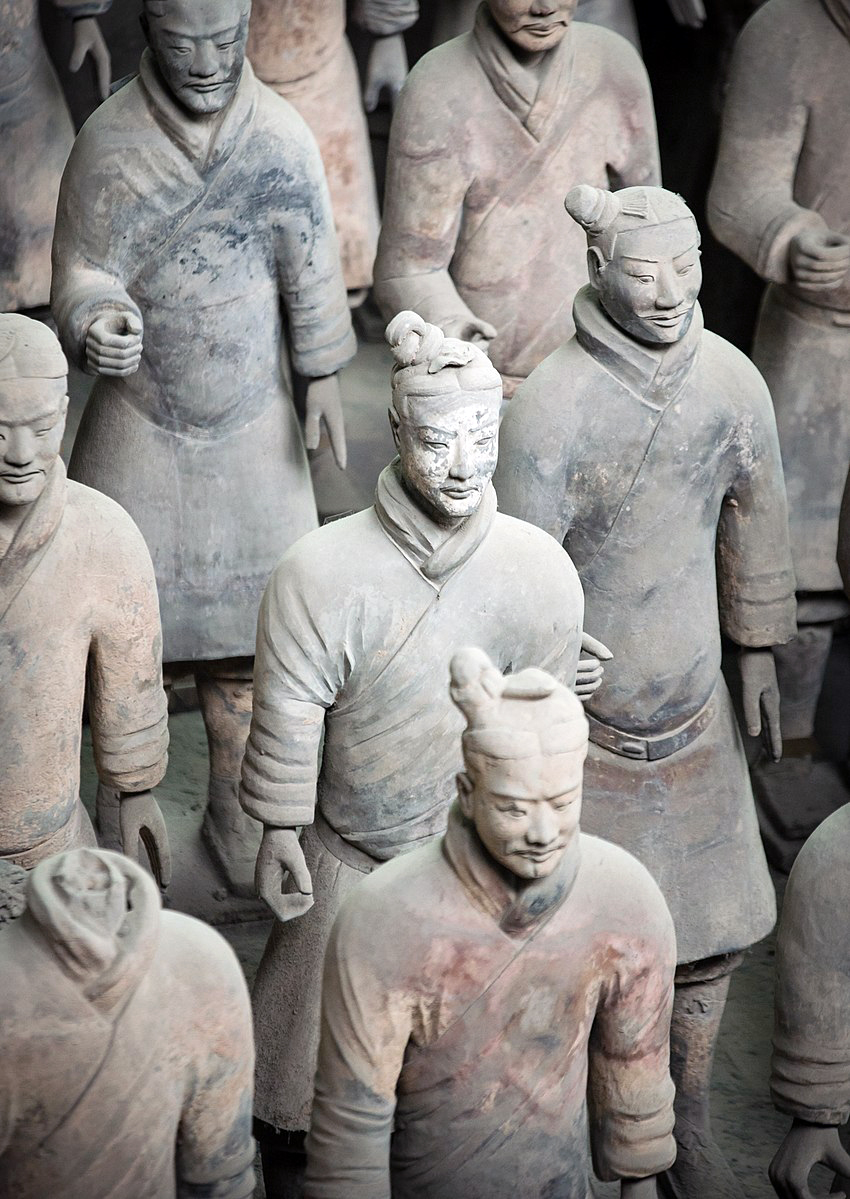
In 1974, farmers in Xi’an accidentally discovered the Terracotta Army while digging a well. This incredible archaeological find uncovered over 8,000 life-sized terracotta warriors, horses, and chariots, each intricately detailed and unique in expression. The discovery has since astounded the world and shed light on the ancient history of China.
Significance of the Terracotta Army

The Terracotta Army holds great significance as it represents the power and authority of Emperor Qin Shi Huang. It also provides valuable insights into ancient Chinese military practices, artistic craftsmanship, and religious beliefs.
Construction and Purpose of the Terracotta Army

The Terracotta Army was constructed to protect Emperor Qin Shi Huang in the afterlife. The life-sized statues were meticulously crafted by skilled artisans using a combination of clay sculpting and assembly line techniques. The purpose of the army was to accompany the emperor and provide him with protection, as well as to showcase his power and authority for eternity.
Features of the Terracotta Warriors

The Terracotta Warriors are life-sized statues with intricate details. Their features include individually sculpted facial expressions, hairstyles, and armor. Each warrior is unique, representing different ranks, weapons, and poses. The attention to detail and craftsmanship is truly remarkable.
Impact of the Terracotta Army on History
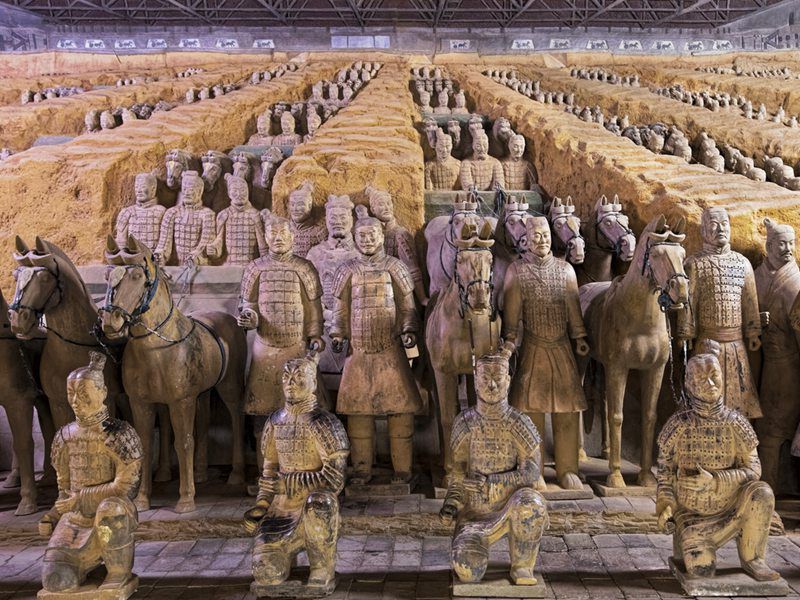
The Terracotta Army has had a profound impact on history. It has provided invaluable insights into the military and cultural achievements of the Qin Dynasty, as well as the level of craftsmanship and artistic skill during that time period. The discovery of the army also elevated the status of Emperor Qin Shi Huang and solidified his place in Chinese history.
Where is the Terracotta Army Located?
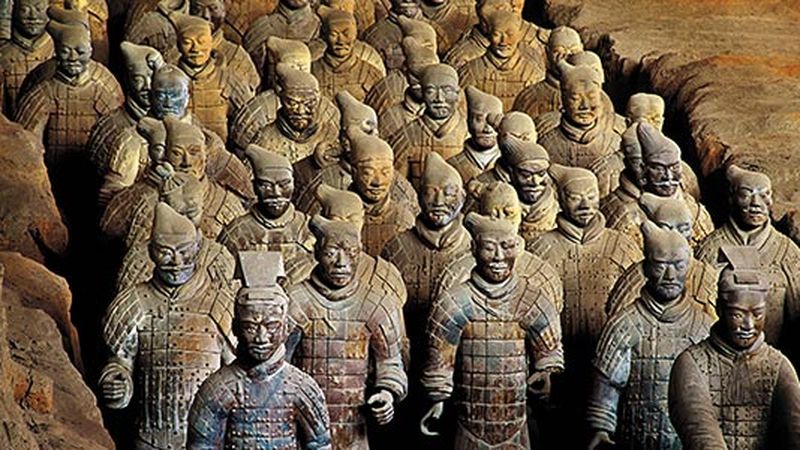
The Terracotta Army is located in the Mausoleum of Emperor Qin Shi Huang, which is situated about 1.5 kilometers east of the Emperor’s tomb in Lintong District, Xi’an, Shaanxi Province, China.
The Mausoleum of Emperor Qin Shi Huang
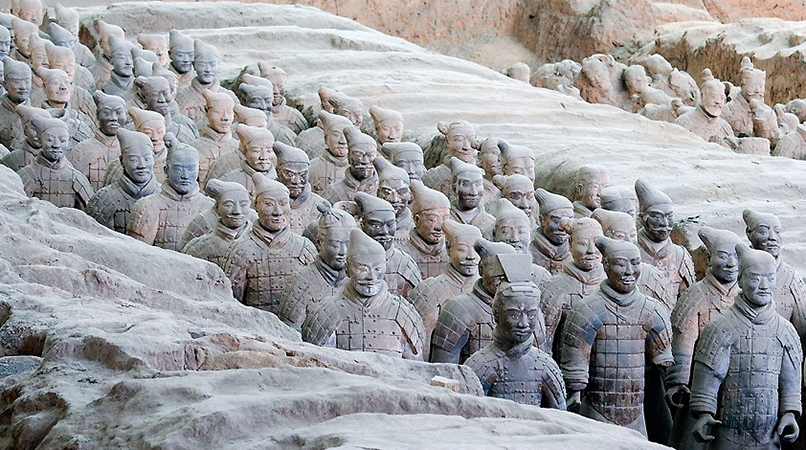
The Mausoleum of Emperor Qin Shi Huang is the location where the Terracotta Army was discovered. Situated east of the Emperor’s tomb in Lintong District, Xi’an, China, it is a vast archaeological site that showcases the grandeur and power of the ancient Chinese emperor.
Archaeological Excavation of the Site

The archaeological excavation of the Terracotta Army site was a painstaking process. You would be amazed by the meticulous work of archaeologists who carefully unearthed over 8,000 life-size terracotta warriors, horses, and chariots, revealing the astonishing craftsmanship and historical significance of the site.
Visiting the Terracotta Warriors and Horses Museum

When visiting the Terracotta Warriors and Horses Museum, you will have the opportunity to witness the remarkable army up close. Explore the three pits filled with thousands of terracotta figures and marvel at their intricate craftsmanship and historical significance.
Qin Shi Huang Mausoleum in Xi’an
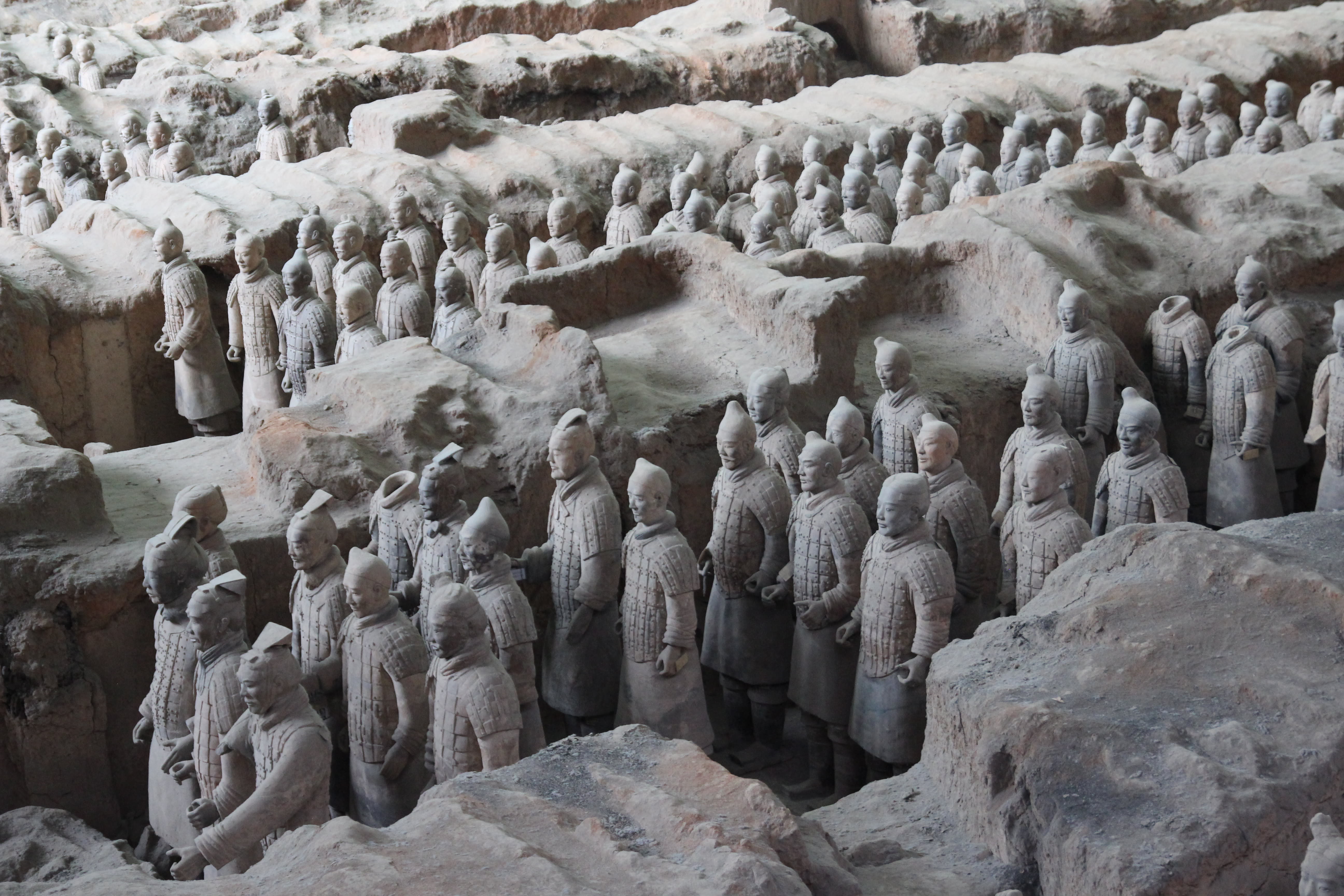
The Qin Shi Huang Mausoleum in Xi’an is the resting place of Emperor Qin Shi Huang, the ruler who commissioned the Terracotta Army. Located about 35 kilometers east of Xi’an, the mausoleum complex covers a vast area and is still being excavated to this day. The main attraction is the Terracotta Warriors and Horses Museum, where you can witness the awe-inspiring army up close. The mausoleum complex also includes other structures such as the burial mound and the tomb itself, which remains unopened to preserve its contents. Visiting the Qin Shi Huang Mausoleum is an incredible opportunity to delve into the ancient history and marvel at the legacy of this influential emperor.
Global Influence and Recognition of the Site

The Terracotta Army has gained global recognition as one of the most significant archaeological discoveries in history. Its impact on understanding ancient China, preservation efforts, and cultural exchange through international exhibits has made it a symbol of China’s rich heritage.
How were the Terracotta Warriors Made?

The Terracotta Warriors were made using a combination of traditional pottery-making techniques and innovative methods. Skilled artisans molded the warriors using clay and then carefully carved intricate details onto their bodies. The statues were then fired in a kiln to harden the clay and give them their distinctive reddish-brown color. These techniques allowed for the creation of life-like and highly detailed statues.
Materials and Techniques Used in Crafting the Warriors

The Terracotta Warriors were crafted using clay as the main material. Skilled artisans molded the warriors using traditional pottery-making techniques. They carved intricate details onto their bodies and fired them in a kiln to harden the clay and give them their distinctive reddish-brown color. This combination of clay molding and firing allowed for the creation of lifelike and highly detailed statues.
Life-size Terracotta Soldiers and Horses

The terracotta soldiers in the army are life-size, standing on average around 6 feet tall. They are accompanied by terracotta horses, each carefully crafted with intricate details. The scale of the statues adds to the grandeur and realism of the Terracotta Army.
Archer and Cavalry Figures in the Army

The Terracotta Army not only consists of foot soldiers but also includes intricately crafted archer and cavalry figures. These statues showcase the military prowess of the Qin Dynasty and add to the grandeur of the army.
Stories Depicted by the Terracotta Figures
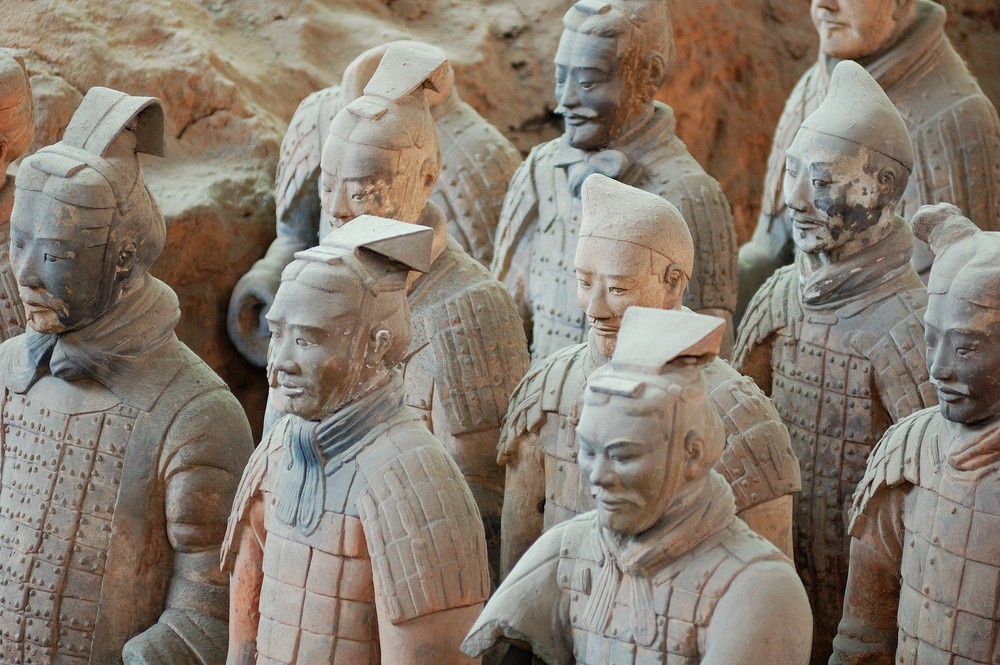
The terracotta figures in the army are not just mere statues but also tell fascinating stories. They depict scenes of battle, with warriors in different positions and expressions, showcasing the bravery and valor of ancient Chinese soldiers. They offer a glimpse into the military strategies and tactics used during that time. The painstaking detail and craftsmanship in each figure truly bring these stories to life.
Variety and Details of the Terracotta Statues

The terracotta statues in the army display a remarkable variety and intricate details. They depict soldiers, archers, cavalrymen, and officers, each with their own unique poses, facial expressions, and hairstyles. The craftsmanship and attention to detail in these statues are truly awe-inspiring.
Who was Emperor Qin Shi Huang?
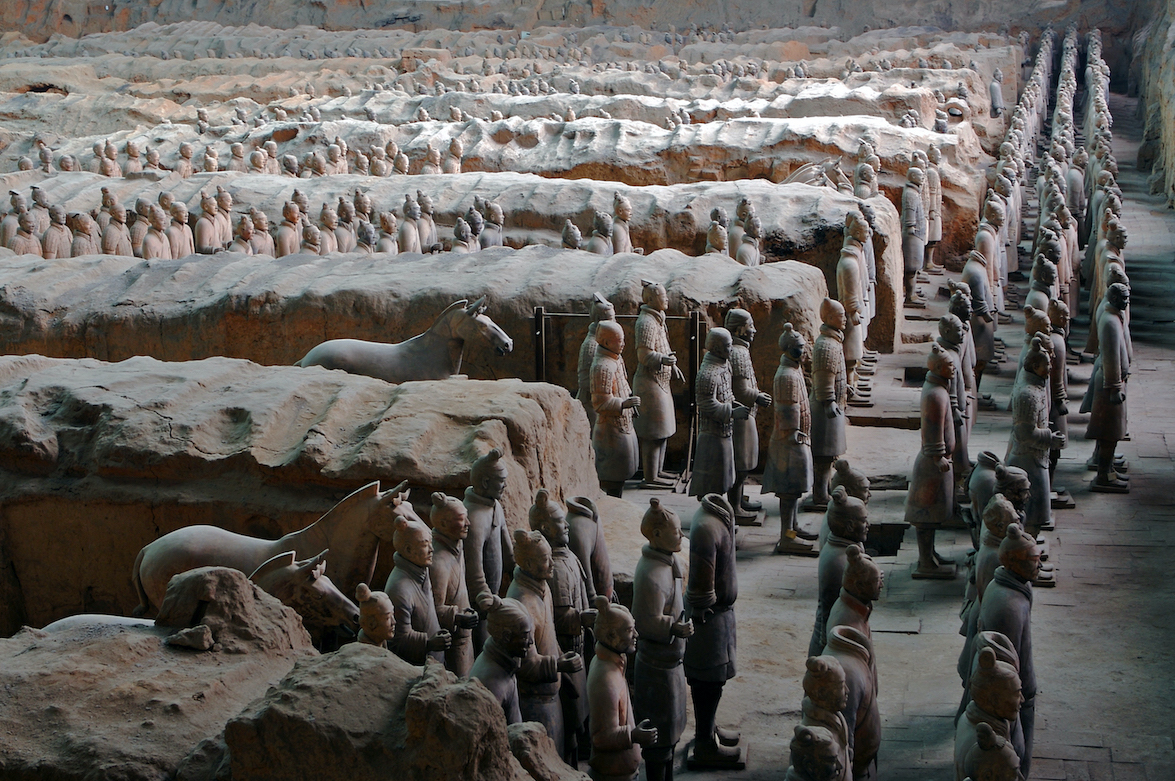
Emperor Qin Shi Huang was the first emperor of the Qin Dynasty in ancient China. He unified China and implemented numerous reforms and infrastructure projects. His reign left a significant impact on Chinese history and his beliefs are reflected in the Terracotta Army.
Emperor Qin Shi Huang’s Reign and Achievements
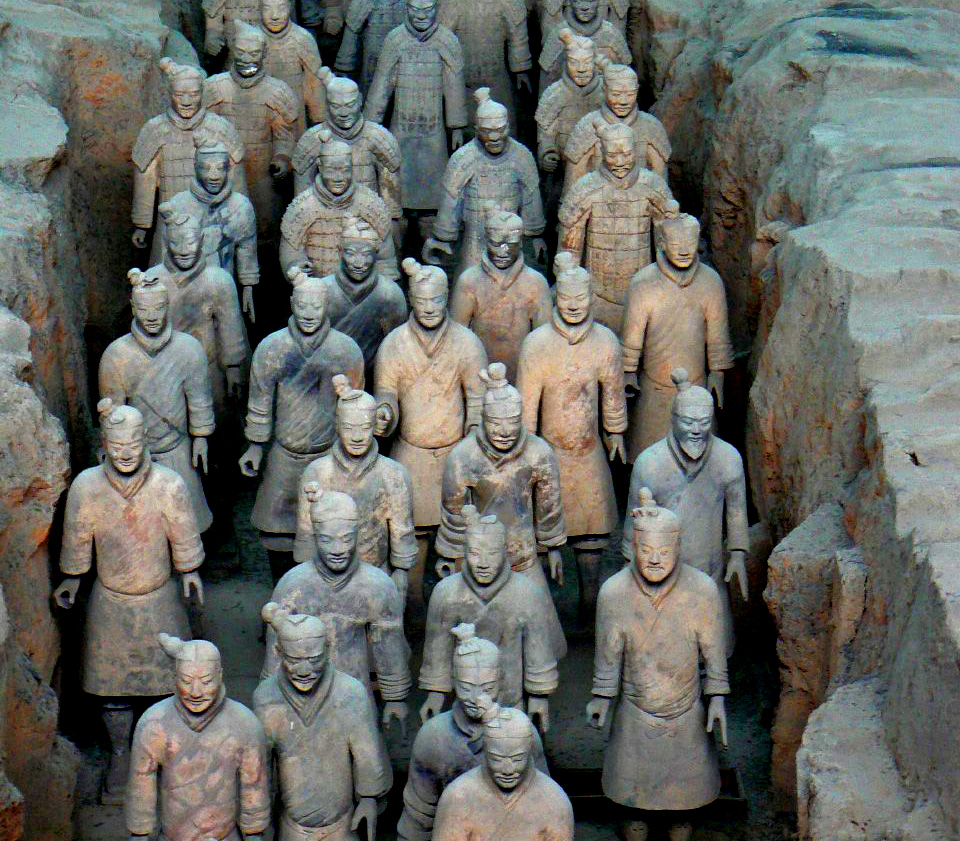
During his reign, Emperor Qin Shi Huang implemented numerous reforms and infrastructure projects, including the standardization of writing, currency, and measurements. He also built the Great Wall of China and the Terracotta Army, leaving a lasting impact on Chinese history.
The First Emperor of the Qin Dynasty
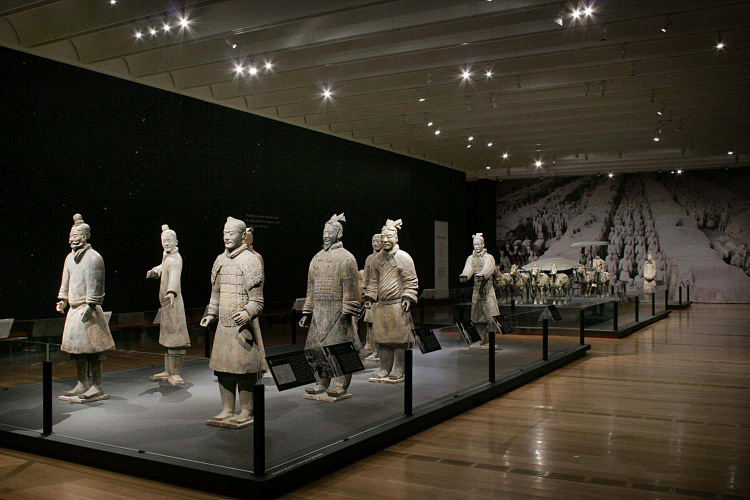
Emperor Qin Shi Huang was the first ruler of the Qin Dynasty in ancient China. He ascended to the throne at the age of 13 and ruled for 11 years before his death.
Legacy and Impact of Qin Shi Huang on China

Qin Shi Huang’s legacy and impact on China are profound. His strict governance unified the country, standardized measures, laws, and language, laying the foundation for a centralized imperial system that lasted for centuries. His construction projects and innovations continue to inspire awe and admiration for his achievements.
Qin Dynasty’s Historical and Cultural Contributions

The Qin Dynasty made significant historical and cultural contributions to China. It established a centralized bureaucracy, standardized the Chinese writing system, and laid the foundations for a unified imperial system that lasted for centuries. The legal reforms and standardized measures implemented by the Qin Dynasty also had a lasting impact on Chinese society. Furthermore, Emperor Qin Shi Huang’s mausoleum and the Terracotta Army are testaments to the dynasty’s artistic and architectural achievements.
Emperor Qin’s Afterlife Beliefs Reflected in the Mausoleum

The mausoleum of Emperor Qin Shi Huang reflects his afterlife beliefs. The grand scale and exquisite craftsmanship of the Terracotta Army show his desire to continue his rule and be protected in the afterlife. The complex also includes rivers of mercury, mirroring his belief in immortality.
Why is the Terracotta Army a Symbol of Ancient China?

The Terracotta Army is a symbol of ancient China because it represents the wealth, power, and artistic achievements of the Qin Dynasty. It showcases the grandeur and sophistication of Chinese civilization during that time.
Symbolism and Cultural Significance of the Terracotta Warriors

The Terracotta Warriors hold immense symbolism and cultural significance in ancient China. They represent the power and authority of Emperor Qin Shi Huang and his quest for immortality. These meticulously crafted statues also reflect the artistic prowess and technical skills of the Qin Dynasty. The Terracotta Army serves as a testament to the rich history, culture, and heritage of ancient China.
Historical and Artistic Value of the Terracotta Figures
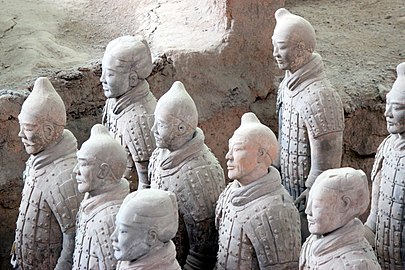
The Terracotta Figures hold immense historical and artistic value. They provide a unique glimpse into ancient China’s military practices, clothing, hairstyles, and armor. The meticulous details and craftsmanship of these statues showcase the artistic genius of the Qin Dynasty.
Guardians of the Emperor’s Afterlife and Tomb Complex

The Terracotta Army served as guardians for Emperor Qin Shi Huang’s afterlife and tomb complex. These statues were meant to protect and accompany the emperor in the afterlife, providing him with the same strength and military power he possessed during his reign. The intricate details and lifelike appearance of the warriors show the importance placed on maintaining the emperor’s prestige and power even in death.
International Recognition of the Terracotta Army

The Terracotta Army has gained international recognition and has become an iconic symbol of ancient China. It has been recognized as a UNESCO World Heritage site and has captivated millions of visitors from around the world, showcasing the cultural and historical significance of the Qin Dynasty. The intricate craftsmanship and historical value of the Terracotta Warriors have made them one of the most influential archaeological discoveries in history.
Preservation Efforts and Future of the Terracotta Army

Preservation efforts have been implemented to safeguard the Terracotta Army for future generations. Conservation measures protect the fragile terracotta figures from deterioration and environmental damage. Ongoing research and restoration projects continue to enhance our understanding of this ancient marvel.
